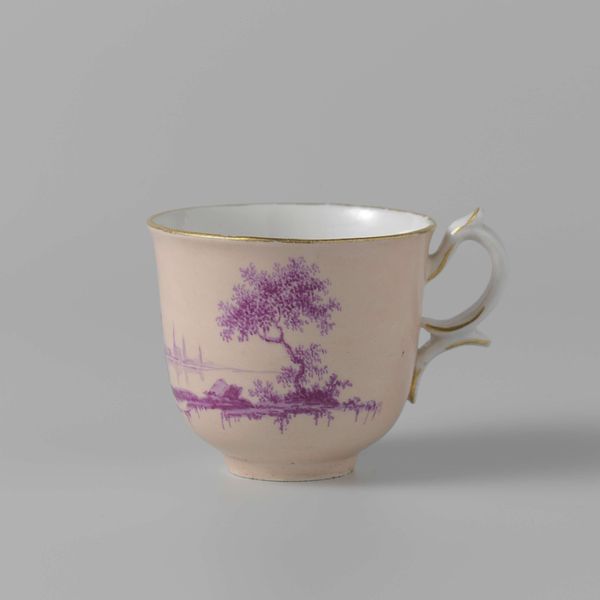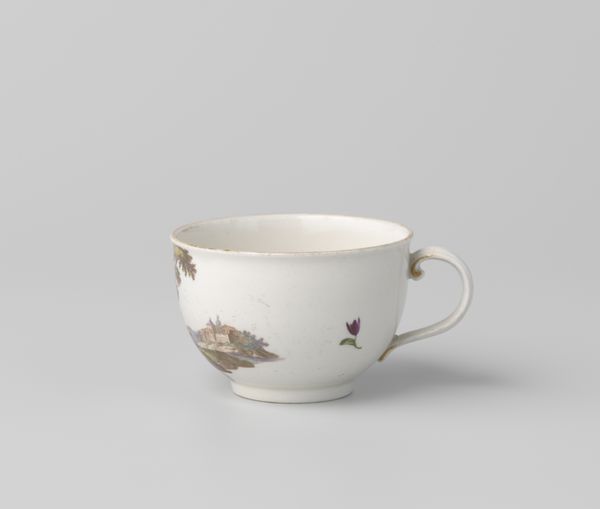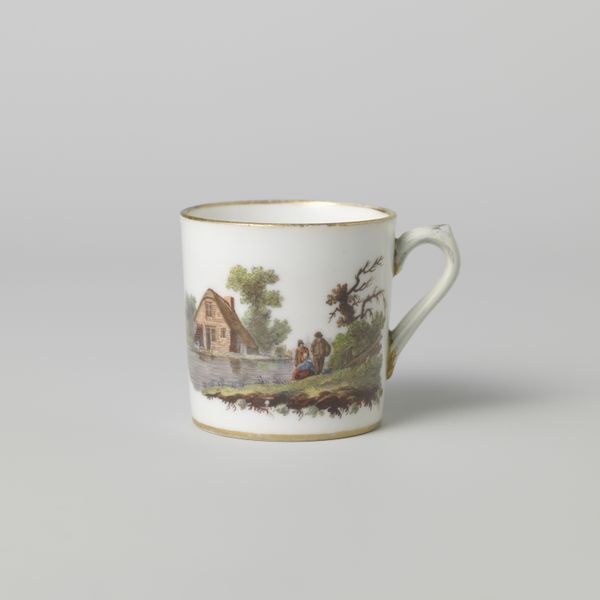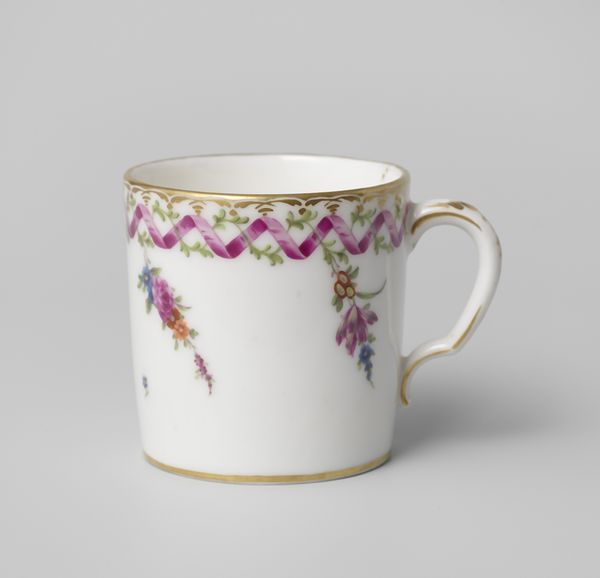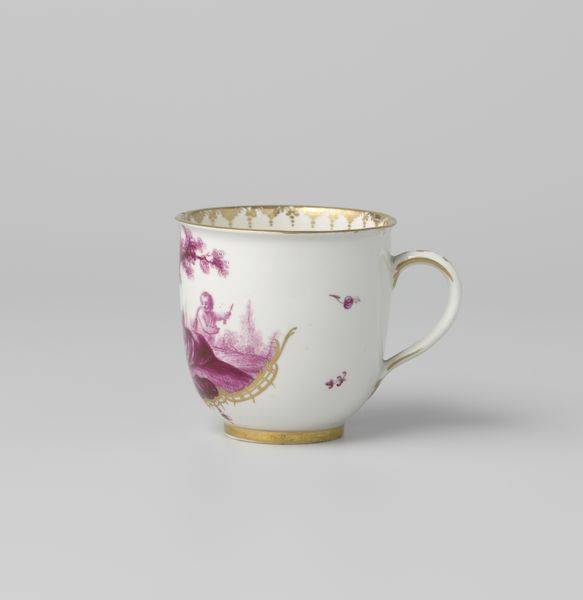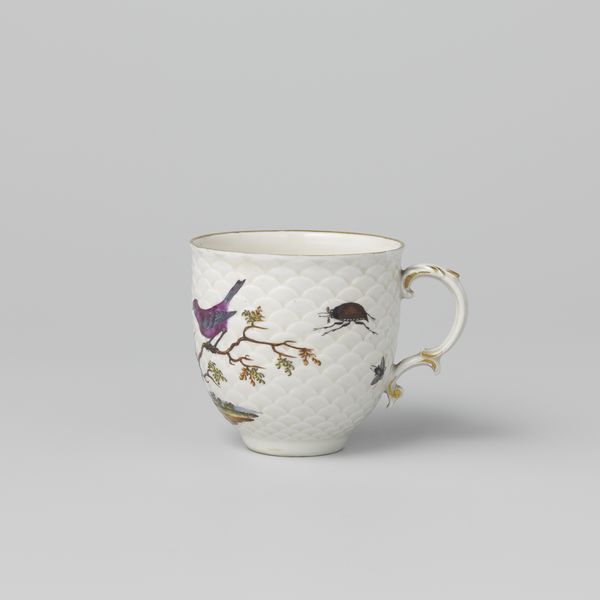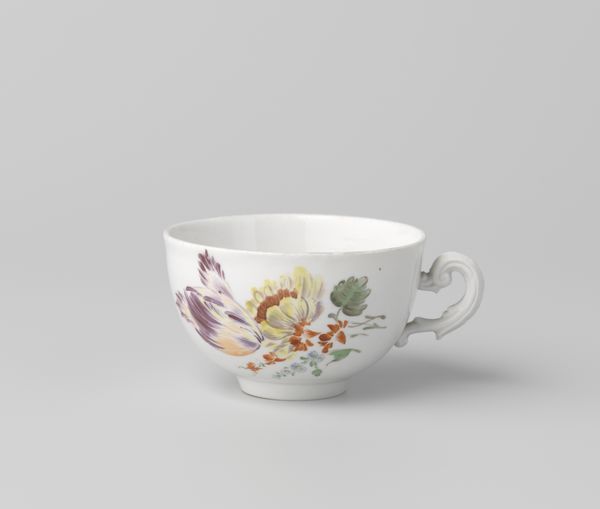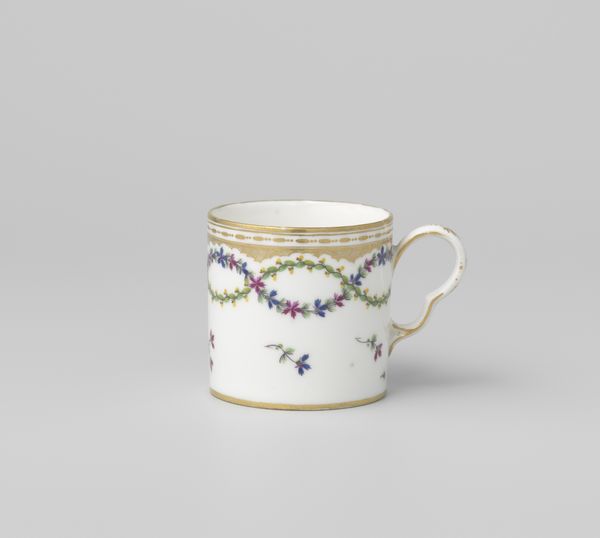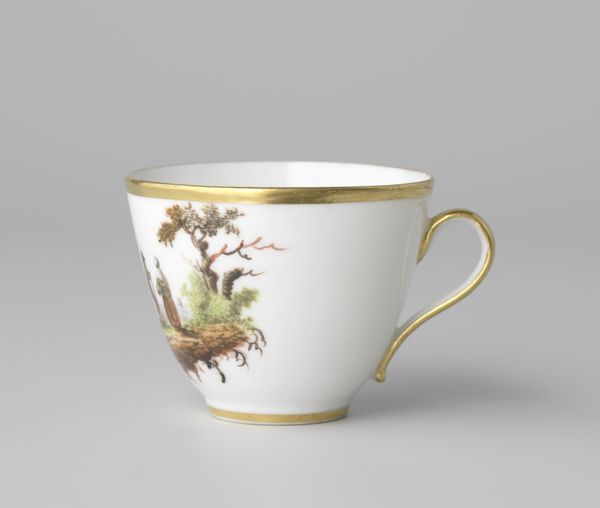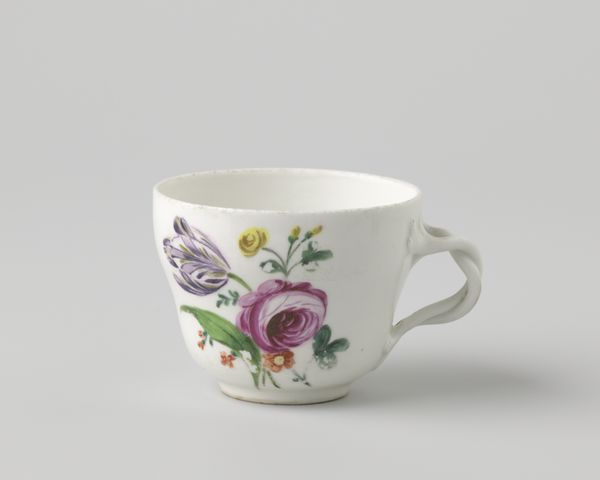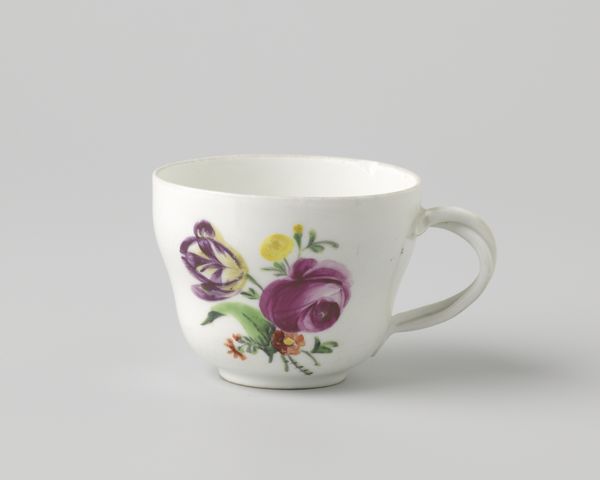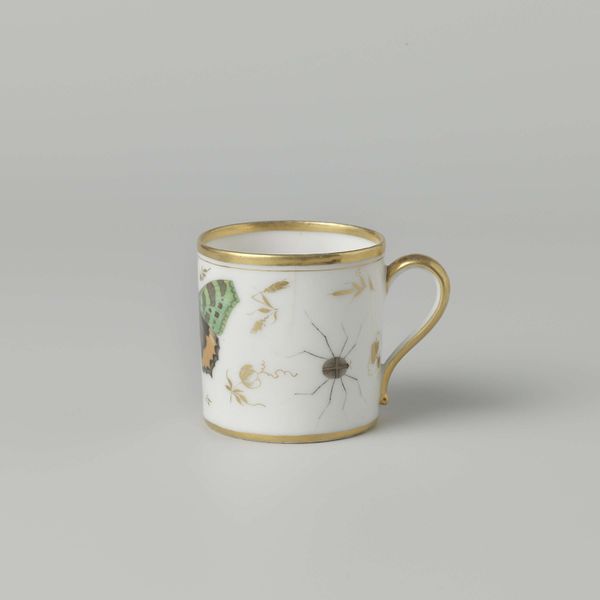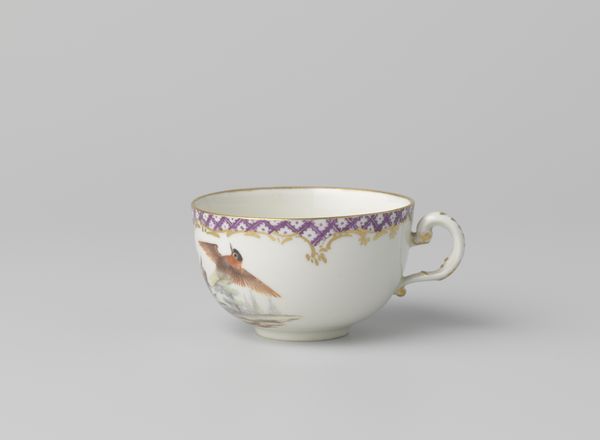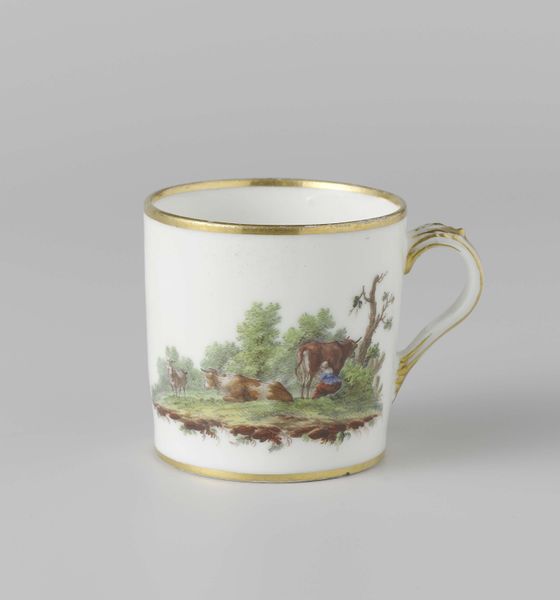
Koffiekop van een koffie- en theeservies, beschilderd met figuren in een rivierenlandschap in bietenrood before 1778
0:00
0:00
painting, ceramic, earthenware
#
painting
#
landscape
#
ceramic
#
earthenware
#
orientalism
#
genre-painting
#
miniature
Dimensions: height 6 cm, width 8.4 cm, depth 6.5 cm
Copyright: Rijks Museum: Open Domain
Curator: Here we have a captivating coffee cup, crafted by Loosdrecht before 1778. Its earthenware surface is adorned with a genre painting in miniature depicting a riverscape. What are your initial thoughts? Editor: The delicacy of the earthenware, and the restrained use of colour gives it a whimsical feel, doesn't it? Almost as if it belongs in a dollhouse. It also calls for close looking: only by looking close, can one appreciate its subtle balance. Curator: Indeed. The scale is crucial, isn’t it? This is no grand canvas; it's an intimate object meant to be held. The “bietenrood,” or beet-red, hue gives the river landscape a certain fantastical character, in a nod to chinoiserie's penchant for imbuing everyday objects with symbolic meaning of an imagined orient. Editor: Absolutely, it takes a familiar trope and personalizes it, playing on familiar symbols and altering them for a specific affect. It's fascinating how the scene, painted with such deliberate simplicity, invites projection of internal symbols. Do you get a feel of longing, or adventure? The lone figure, a hunter perhaps, set against the expansive river creates an impression of personal challenge. Curator: And consider the cup’s form: the shape, the weight in the hand, becomes a part of the overall artistic statement. The handle's curved and elongated form contributes a rhythmic line against the more robust, rounded bowl of the cup, almost like a deliberate drawing on negative space to further complicate the formal elements at play. The delicate, fine lines used in rendering the figure emphasize flatness. Editor: But don’t these images also tell a broader cultural story? The imagery echoes orientalism and suggests a dialogue between cultures—or perhaps, the projection of one culture onto another. Coffee itself becomes a loaded emblem of exchange and empire. Curator: Precisely, this cup encapsulates so many dialogues—between East and West, form and function, surface and depth. Its humble function belies its complex network of meanings. Editor: So much narrative embedded within such a modest object, ripe for an interpretation that extends well beyond a quick caffeine fix. Curator: Agreed. This coffee cup reveals the layers of intention embedded within design, where even everyday objects engage in a subtle dialogue between structure and representation.
Comments
No comments
Be the first to comment and join the conversation on the ultimate creative platform.
